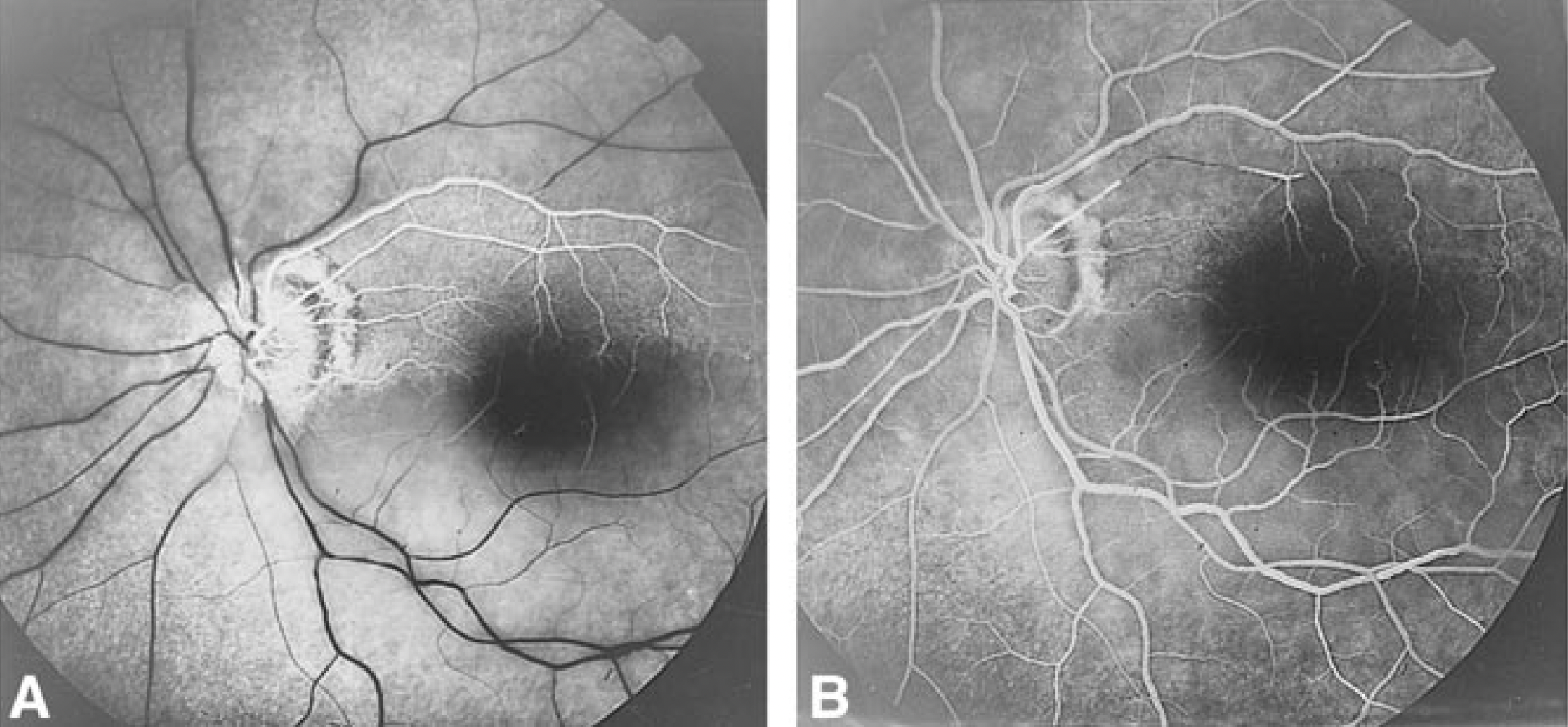Considered an ophthalmic emergency, central retinal artery occlusion (CRAO) is a rare ocular vascular obstructive disease that leads to sudden and painless vision loss in one eye, often resulting in poor prognosis. The optimal treatment for CRAO remains uncertain, and current interventions have limited effectiveness. However, new research demonstrates that the clinical efficacy of a potential surgical treatment option—superselective ophthalmic artery thrombolysis for CRAO—surpassed that of traditional therapies.
 |
| Urgently sending a CRAO patient for intra-arterial thrombolysis, ideally within a few hours of onset, will help patients avoid irreversible retinal damage and vision loss, though the authors of this study believe the intervention may still improve vision to some extent when done within a few days. These fluorescein angiography images (from a different study) show diffuse hypoperfusion of the retinal vessels before treatment (A) and nearly complete recanalization immediately after (B). Photo: Padolecchia R, et al. AJNR Am J Neuroradiol 1999;20:565–567. Click image to enlarge. |
Thrombolysis by administration of the clot-busting agent tPA is the preferred treatment for acute cerebrovascular ischemic stroke, and it can also be effective in CRAO when administration is possible. Permanent damage from CRAO has been shown to occur in as little as 4.5 hours; as the logistics of delivering tPA therapy within that window is very difficult to achieve, a group of researchers in China wanted to assess efficacy of thrombolysis when performed beyond that cutoff but still within a few days.
The retrospective study included 138 CRAO patients with an onset time of one to three days. Among the cohort, 86 patients chose traditional treatment and served as the control group, while 52 patients underwent superselective ophthalmic artery thrombolysis and served as the observation group. In this study, “traditional treatment” included hospitalization for observation, IOP lowering, vasodilatation, ophthalmic massage and oxygenation. The visual acuity of the control group was recorded on the fourth day after the onset of the disease, while the visual acuity of the observation group was recorded on the first postoperative day.
When comparing the improvement rates in visual acuity between the two groups, the researchers found that the total improvement rate of treatment in the observation group was 65.4%, significantly higher than the control group’s improvement rate of 10.5%. Additionally, no complications related to the thrombolysis procedure were observed in patients.
“The clinical therapeutic effect of super-selective ophthalmic artery thrombolysis for the treatment of CRAO is significantly higher than that of the traditional modality treatment,” the study authors wrote in their paper on the study, published recently in Ophthalmic Research. “Popularizing patients' knowledge of painless sudden monocular vision loss, as well as strengthening the linkage between ophthalmology and neurology, will enable CRAO patients to receive timely and effective treatment,” they added.
The study authors also pointed out that “the longer the CRAO exists after this time, the more extensive the irreversible retinal damage will be.” If the onset time is greater than 240 minutes, it will cause irreversible retinal damage; however, they explained, intra-arterial thrombolysis can still be considered in these cases and has the potential to improve the patient's vision to some extent, although larger, multicenter, prospective randomized controlled studies are warranted to validate these findings.
Kang N, Xue Y, Wang F, Guan Q, Li M. Analysis of the effect of superselective ophthalmic artery thrombolysis for central retinal artery occlusion. Ophthalmic Res. June 19, 2024. [Epub ahead of print]. |

